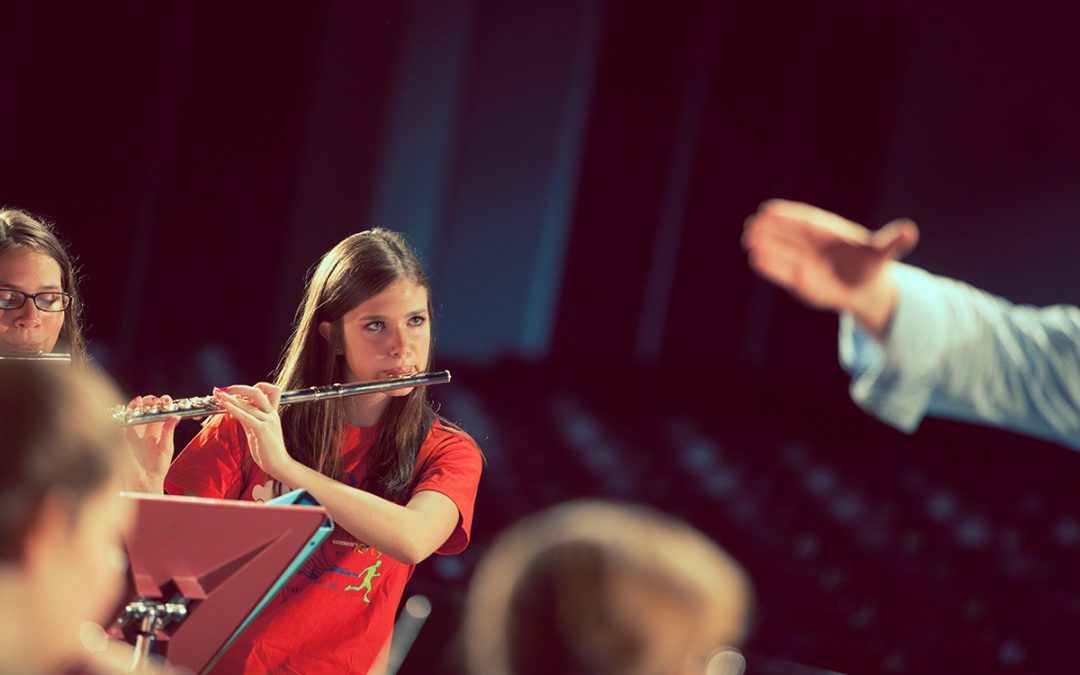Though working on pieces in a rehearsal can be extraordinarily beneficial, time spent doing warm-up and ensemble development exercises at the beginning and scattered throughout a rehearsal can be equally – if not more – rewarding. Here are a few ideas to help make that time even more productive.
The “P” Word. Though we all know the incredible value of doing warm-up and ensemble development exercises with our ensembles, when I ask teachers why they don’t spend more time doing them, the answer is most often one word: percussion. The recurring question is, “What do I do with all of those percussionists in the back of the room?” Time and again, in rehearsals, I hear directors say things like, “Winds, let’s do this tuning exercise. Percussionists, while we do that please get ready for the first piece and then sit quietly, Oh, and please be model citizens with perfect behavior.” Okay, I made that last part up, but it is often implied! We must involve our percussionists in those warm-up exercises. If we don’t, we run the risk of our band sounding like a wind group, and a percussion ensemble sharing a stage rather than the two unified into one cohesive sound. So, whether you are writing those exercises, or buying a warm-up and ensemble development book, make certain to have percussion parts (snare, bass drum, auxiliary, mallets, and timpani) integrated into the fabric of every exercise.
Isolate To Conquer. One of the most important aspects of a good warm-up exercise is that it isolates the concept being addressed. So often I hear an ensemble play an exercise that is meant to help teach balance, blend, intonation, dynamics, and articulation all at the same time. An exercise like that would be perfect as a summative exercise, or as one that is meant to combine concepts the ensemble already has well in hand. But, when training those ensemble skills in a warm-up exercise they must be isolated so that they can be mastered before attempting to combine them.
Familiarity Breeds Ignoring. Most anything used once has impact. But used too often, that very same thing loses its intensity and power. Basically, the more we see or hear something, the more we tend to ignore it and not pay attention to it. That is certainly true, abundantly true, when it comes to warm-up exercises. Even the best exercise, used daily, allows students to “tune out” (no pun intended) and basically go through the motions on autopilot. In so doing, they are probably not thinking but just going through the paces since they know the exercise by heart. However, we all know that an ensemble needs several times with an exercise to reap its rewards. Therein lies the conundrum. I believe the answer rests in having several exercises of the same type, with the same goals, that are just different enough that the students can’t do it by rote and will need to pay attention. Thus reinforcing and developing the concept without the worry of them playing it on autopilot.
About the Author
Dr. Boonshaft, Director of Education for KHS America, is the author of the critically acclaimed best-selling books Teaching Music with Passion, Teaching Music with Purpose, and Teaching Music with Promise. He was honored by the National Association for Music Education and Music For All as the first recipient of the “George M. Parks Award for Leadership in Music Education.” Dr. Boonshaft was selected for the Center for Scholarly Research and Academic Excellence at Hofstra University in Hempstead, NY, where he is Professor Emeritus of Music.
The content of this Blog article or Banded Story is the intellectual property of the author(s) and cannot be duplicated without the permission of KHS America and/or the author(s). Standard copyright rules apply.



 We look forward to the evolution of this exciting program, and welcome feedback on how we can further enhance the work that you do in music education.
We are excited to offer your program the opportunity to join the KHS America Academic Alliance today.
We look forward to the evolution of this exciting program, and welcome feedback on how we can further enhance the work that you do in music education.
We are excited to offer your program the opportunity to join the KHS America Academic Alliance today.